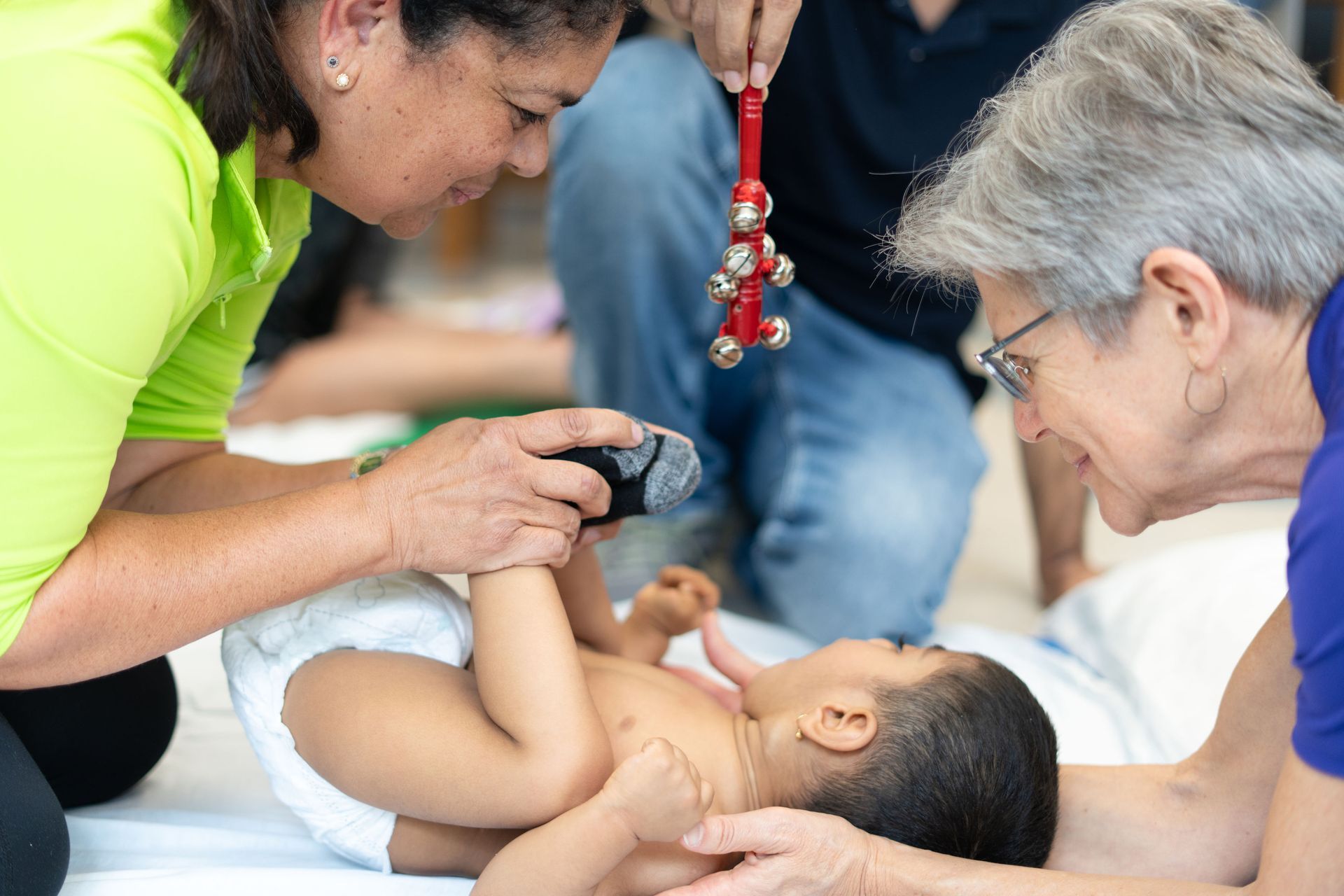Handle with Care: Infant Development and Handling
Techniques for the Pediatric Therapist
9
- PT/PTA CE Approval 20-1282626
- OT/OTA CE Approval 20-1282855
- SLPs/SLPAs may submit to ASHA for CE hours on their own.
Keiser University: 2085 Vista Parkway, West Palm Beach, FL 33411 Room TBD
9 CE Hours: 8:00 am - 5:00 pm
Occupational Therapists, Speech Therapists, Physical Therapists, and Therapy Assistants
$300
- $275 - Early Bird Discount before 2/17/2025
- $275 Group (5+) Discount before 2/17/2025

Course Description
Designed for Physical Therapists, Occupational Therapists, and Speech Therapists, this course delves into the intricate nuances of approaching infant handling with a ‘whole child’ approach by focusing on key aspects of developmental milestones, sensory and neurological systems, and developing child-friendly handling techniques.
Program Objectives
- Understand whole child development for typical infants and toddlers
- Identify signs of atypical development in infants and toddlers
- Identify how underlying sensory-motor control and routine habits of positioning/handling contribute to development
- Learn importance of continuous assessment of alignment, postural control, and tolerance of sensory input for effective treatment
- Define handling, postural control, hand placement, and basics for movement facilitation.
- Apply handling strategies to infants/toddlers:
- With limited head/trunk control
- Who are learning transitional movements
- Transitioning to early walkers
- Differentiate handling approaches for tone differences (high tone vs. low tone) and across various patient examples.
- Develop interdisciplinary strategies for effective patient care, using observation checklists for assessment.
Participants will be able to
- Demonstrate knowledge of key elements and timing of typical infant/toddler development related to the musculoskeletal, sensory and neurological systems.
- Identify signs of atypical development and correlate impact of alignment, social engagement and self initiated movement on overall development and progression in milestones.
- Understand and implement handling/positioning techniques to facilitate and promote optimal development in infants/toddlers with high tone, low tone, or developmental delay.
Course Schedule
8:00-8:30 Sign In, Introductions
8:30-9:30: Objective 1: Understand typical infant and toddler development:
- Musculoskeletal alignment and development pre- and post-natally
- Sensory and neurological system development, effects of typical sensory-motor input and feedback on developmental skills acquisition
9:30-10:15: Objectives 2 & 3: Identify atypical development from 0-3 years
- Considerations for neurological conditions/deficits
- Impact of atypical alignment, sensory awareness and/or muscle strength on developmental skills
- Identify how underlying sensory awareness and regulation interacts with self-generated movement and routine positioning/handling contributes to development
10:15-10:30: Break
10:45-11:15: Objective 4: Learn importance of continuous assessment of alignment, postural control, and tolerance of sensory input for effective treatment
- Use of observation checklists
- Understand impact of alignment for fine motor control, speech, swallowing/chewing, balance and ambulation - demonstration
- Recognize how underlying sensory awareness/regulation interacts with self-generated movement - demonstration of visual, auditory and tactile impairment
- Gain awareness of the contribution of routine positioning and handling by caregivers on development
11:15-12:30: Objective 5: Define handling, postural control, hand placement, and basics for movement facilitation
- What is Handling?
- Key Points of Control
- Optimal Hand position and the power of touch
- Goals of Movement Facilitation: Where do you start, where do you want to go, and how are you going to get there?
- Handling basics for tone differences (high tone, low tone).
12:30-1:30 BREAK FOR LUNCH
1:30-3:00: Objective 6 LAB: Apply handling strategies to infants/toddlers:
- With limited head/trunk control
- Who are learning transitional movements
- Transitioning to early walkers
- Apply handling techniques and strategies in small groups/with a partner to facilitate various movements including:
- Improving head/trunk control
- Transitional movements (sitting to quadruped, quadruped to tall kneel, pull to stand, stand to floor, etc)
- Improved UE function
- Improved Speech/feeding/breath function
3:00-3:30 Objective 7 LAB: Differentiate handling approaches for tone differences (high tone vs. low tone) and across various patient examples
- Importance of sensory input matching individual needs
3:30-4:45: Objective 8 LAB: Develop interdisciplinary strategies for effective patient care, using observation checklists for assessment.
- Observe different age groups, typical and atypical infants and toddlers
- Create priority lists of considerations for each example to optimize speech, occupational and physical therapy, such as:
- Modifications for alignment and postural control
- Enhance sensory tolerance through graded input
- Adjust demands to child’s capabilities
- Child-led, therapist-directed play based activities
4:45-5:00 Wrap up, complete course survey and sign out
Mary Pengelley, PT
Mary Pengelley, PT, DPT
Mary Pengelley has been a pediatric physical therapist since 1983. She has worked with children of all ages including young adults who have grown up with a variety of developmental disabilities, including cerebral palsy, traumatic brain injury, autism spectrum disorder, genetic disorders, muscular dystrophies, spinal muscular atrophy, brachial plexus injury, and torticollis. Mary is the Rehab Director at Progressive Pediatric Therapy in West Palm Beach FL, is certified as an Assistive Technology Practitioner, teaches pediatric classes for DPT students, and also teaches continuing education webinars and live classes for licensed therapists.




